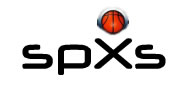Sports betting generally provides a predictable long-term advantage to the ”house” or casino, while offering to the player a large short-term payout possibility. The player’s disadvantage is a result of the casino not paying winning wagers according to the game’s ”true odds”. In sports betting it is common that the bettor needs to win at least 52.4% of the bets to be on a 50-50 fair game with the casino.
Instead of trying to understand randomness in sports or apply competitive balance or performe cross-sport comparison. The presented webpage goes back to the fundamental analysis between the betting variables by applying an indirect factor analysis. Which is a statistical method used to describe variability among observed, correlated variables in terms of a potentially lower number of unobserved and generalized variables called indirect factors. The study presents a novel and simple methodology to express the betting variables as a function of the team's winning percentage position.
Teams order by winning PCT: (1) best (30) worst winning percentage
(1) Golden State was 2016-2017 best winning percentage (30) Brooklyn was 2016-2017 worst winning percentage
(1) Golden State was 2016-2017 best winning percentage (30) Brooklyn was 2016-2017 worst winning percentage
The website is divided as follows: ![]() odel: introduces the model, data
and expert system, in
odel: introduces the model, data
and expert system, in ![]() egression: the regression
results from the NBA seasons since 1990 are analyzed and in
egression: the regression
results from the NBA seasons since 1990 are analyzed and in
![]() layer Edge: a proposed strategy
to overcome the house edge of 2.54% is presented.
layer Edge: a proposed strategy
to overcome the house edge of 2.54% is presented.
 Website
Website